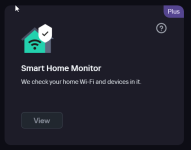- Jun 12, 2023
- 684
Although my other posts may seem like I’m paranoid, I think this is a cause for concern.
I’ve noticed a file from wire guard VPN on my computer. I dont use wireguard, nor have it installed. I also have noticed weird registry changes, leading me to believe it’s a malware infection which I’ll deal with.
However: Wireguard has the ability to connect to a home network and view things within it externally. I’m concerned about them possibly enabling network settings on my devices or there being a intrusion on the network.
1: Is this a legitimate cause for concern?
2: What should I do here considering I do not have access to everything in my network as my parents manage the Wi-Fi.
I’ve noticed a file from wire guard VPN on my computer. I dont use wireguard, nor have it installed. I also have noticed weird registry changes, leading me to believe it’s a malware infection which I’ll deal with.
However: Wireguard has the ability to connect to a home network and view things within it externally. I’m concerned about them possibly enabling network settings on my devices or there being a intrusion on the network.
1: Is this a legitimate cause for concern?
2: What should I do here considering I do not have access to everything in my network as my parents manage the Wi-Fi.


